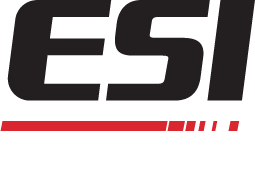EB Vs. Uv Equipment
EB vs. UV: Equipment
Thanks to their technological advancements and being more environmentally friendly, both electron beam and ultraviolet curing processes are quickly becoming two of the packaging industry’s most popular solutions for laminating adhesives, coatings, and inks.
We have previously explained the energy considerations, differences in material waste, and penetration. And while they share some traits such as not using solvents, unlike water and solventbased curing technologies, these processes do use distinctly different methods and equipment. Because of the possible costs and maintenance associated with new technology, this is often one of the first things people ask about when considering a switch to EB or UV curing.
The Components of EB Curing Equipment
Modern ebeam curing equipment is much smaller than it once was, and is ideal for installation at the end of a press though it’s not practical for interstation curing. The equipment involved in the process includes a vacuum chamber that contains filaments and grids, as well as a pump system that maintains the vacuum pressure.
The UV process for packaging uses mediumpressure mercury lamps to achieve curing, and these are energized with either electrodes or microwaves. The lamp itself contains reflectors, bulbs, and heat management, and shielding, but the lamps are compact and can usually be installed between printing decks for interstation curing. Other components of the UV system include the:
Blowers
Control panel
Power supply
The Cost of the Technology
Equipment costs: When comparing the cost of EB and UV curing technologies, it’s important to think about the size of your operation. While a single UV lamp will cost significantly less than an EB system—which will typically run around $500,000—a multilamp UV system will likely cost the same, if not more.
Energy savings: Both technologies offer great savings in terms of energy because they use significantly less power than what’s needed to run a thermal drying oven. And while mercury lamps are prone to thermal energy loss, electron beam equipment is more efficient. However, EB curing does require some extra power to run the system’s pump and cooling components, plus the additional cost of the nitrogen that’s required to keep the curing zone inert.
Comparison: Despite the differences between the technologies, EB and UV curing tend to cost about the same, but a more detailed comparison should be drawn up depending on the specific needs of your company.
How Safe is the Equipment?
The equipment needed to operate EB and UV curing technologies are both safe to use, but each technology is capable of posing a threat. The UV radiation and heat created by the mercury lamps used for UV curing can cause skin damage, eye damage, and burns, but the equipment is designed to mitigate these dangers. Similarly, while EB technology does generate X-rays, the equipment is designed to contain and shield these rays. The units are also equipped with monitors that will automatically shut down the process if X-rays are detected.
For a growing number of companies, the benefits of EB and UV curing outweigh any drawbacks and certainly eclipse any of the more traditional curing methods. Give us a call today so we can explain why our electron beams are the best in the industry, and why making the switch to EB curing just makes good business sense.

